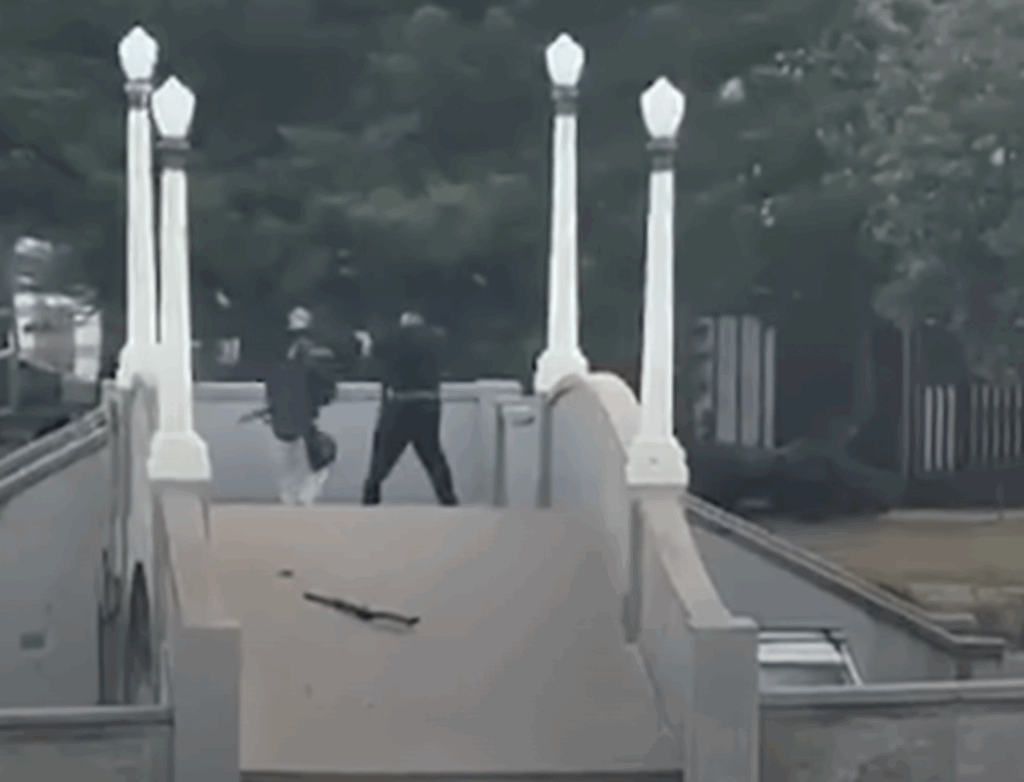IN THE MEDIA
Iran’s multifront war against Israel is decades old
June 7, 2023 | Oved Lobel

Jewish News Syndicate – 6 June 2023
In April, Israeli Defense Minister Yoav Gallant declared “the end of the era of limited conflicts” and warned of the future likelihood of a multifront war with Iran and its so-called “resistance axis” due to an Iran-driven “convergence of arenas.”
Gallant was not describing an entirely new phenomenon. Iran’s attempts to coordinate a multifront war against Israel are decades old. The current situation in which Israel finds itself is part of a long process of competitive co-evolution in which Iran attempts to unite the fronts while Israel attempts to isolate them. Thus far, Israel has been remarkably successful in managing the threat, while Iran has yet to demonstrate proof of concept.
Since 1991, the U.S. State Department has been reporting on Iran hosting “a series of high-profile meetings with [Hezbollah] and Hamas with the stated goal of coordinating their efforts against Israel.” These same yearly reports note Palestinian terrorist infrastructure in Lebanon and Syria, which directly ruled Lebanon as a military colony from the 1990s until 2005.
Syria and Lebanon have formed a single unit, operationally and geographically, since at least the 1980s. Iran’s Islamic Revolutionary Guard Corps (IRGC) used this unit to export its Islamic revolution and wage war against Israel.
With the collapse of the Soviet Union, from which Syria derived its military power, Syria became a dependent client of the IRGC.
The “resistance axis” that emerged was comprised of the IRGC and its local Arab branches, such as Hezbollah, Palestinian Islamic Jihad (PIJ), Ansar Allah and various other Shi’ite organs in Iraq and Syria. It also included those wholly dependent materially upon Iran, like Syria, Hamas and other Palestinian groups. The axis parties began trying to coordinate a multifront war against Israel on all fronts.
The first iteration of this war was the terrorist element of the Palestinian insurrection that began in late 1987, known as the first intifada. This insurrection was initially spearheaded and to a degree catalyzed by PIJ and the Popular Front for the Liberation of Palestine-General Command (PFLP-GC), a Syrian proxy.
PIJ, already ideologically beholden to the Islamic revolution, was fully integrated into the IRGC’s command structure when Israel deported its leadership to Lebanon in 1988. PIJ began carrying out joint attacks with Hezbollah shortly thereafter. Hundreds more Hamas and PIJ leaders and operatives were deported to Lebanon in 1992, bringing them under the command and control of the IRGC.
While these groups primarily operated out of Syrian-controlled Lebanon and the Palestinian territories in the 1990s, they used Syria in the north and Sudan in the south as their headquarters and strategic depth, overseen in all three countries by the IRGC.
Former Hamas spokesman and senior official Ibrahim Ghosheh says he coordinated attacks from Lebanon in support of the intifada with then-Hezbollah Secretary-General Abbas al-Musawi on the sidelines of a 1991 conference in Iran. Meetings to coordinate attacks by the resistance axis in Syria and Iran continued throughout the 1990s.
Israel’s unconditional withdrawal from Lebanon in May 2000 became, according to Ghosheh, a “direct factor” in launching the second intifada. Hezbollah restarted attacks against Israel to coincide with Palestinian attacks, which it oversaw in Gaza, Lebanon, Judea and Samaria, including the first use of mortars from Gaza in 2001.
Hezbollah also attempted to smuggle rockets into Judea and Samaria in order to open a third missile front alongside Lebanon and Gaza, something the IRGC has continued to attempt, thus far unsuccessfully.
Hezbollah also began kidnapping Israeli soldiers as an overt “gift” to the intifada in 2000. It then traded these soldiers for hundreds of Palestinian prisoners.
When Israel assassinated Hamas leader Sheikh Ahmed Yassin in 2004, Hezbollah Secretary-General Hassan Nasrallah declared at a joint Hamas-Hezbollah memorial service in Lebanon, “Consider us in [Hezbollah], from the secretary-general and leadership down to our fighters and women, members of Hamas and soldiers under your command.”
2006 was the third iteration of the multifront war, in which Hamas ambushed Israeli soldiers and kidnapped Gilad Shalit, prompting Israel to launch Operation Summer Rains, the first major ground operation since Israel’s unilateral disengagement from Gaza.
To relieve pressure on Hamas, Hezbollah launched its own ambush of Israeli soldiers on the Lebanese border, with Nasrallah explicitly linking the two events and saying he would now negotiate for both Shalit and the soldiers held by Hezbollah. This sparked the Second Lebanon War, with rockets flying from both Gaza and Lebanon throughout.
Since 2019, however, Israel has managed to isolate PIJ not only from the rest of the resistance axis three times, but even from Hamas. Despite their rhetoric, none of the resistance axis nodes has made a serious attempt to coordinate assaults since 2006 beyond token rocket and drone launches, if that.
Israel, meanwhile, has demonstrated that it can continue hitting the IRGC and Iranian nuclear and missile infrastructure in Palestinian-controlled areas, Lebanon, Syria, Iraq and even Iran itself with relative impunity.
While the missile and drone arsenals and local production capacity of the IRGC’s resistance axis have reportedly vastly increased in quality and quantity, and the axis has consolidated power in Syria and virtually conquered Iraq and Yemen, there is thus far no evidence of a “convergence of arenas.”
On the contrary, although the IRGC may be a single integrated network across the Middle East and has increased its numbers as well as its territorial control and lethality, it has yet to demonstrate it is capable of anything more than symbolic local retaliation against Israeli strikes and assassinations, much less coordinating a true multifront war.





